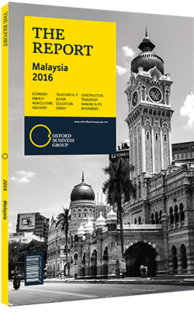Cecilia Malmström, European Commissioner for Trade: Interview

Interview: Cecilia Malmström
What steps can be taken to ensure that current EU-ASEAN free trade agreement (FTA) negotiations do not end in another impasse?
CECILIA MALMSTRÖM: During the 13th ASEAN Economic Ministers-EU Trade Commissioner Consultations held in Kuala Lumpur on April 26, 2015, all parties agreed that events had moved on since the negotiations had been put on hold, and there was a need on both sides to take stock of these developments. Senior officials reported to ministers in Chiang Mai on March 3, and ministers asked them to intensify their work to assess the state of ASEAN economic integration, the progress in negotiations for bilateral FTAs between the EU and individual ASEAN countries, and how a region-to-region FTA could add value, building on bilateral FTAs, notably those FTAs between the EU and Singapore and the EU and Vietnam. I believe this stock-taking exercise is crucial in order to reach a mutual understanding and agreement on how best to make progress toward achieving an ambitious and comprehensive region-to-region EU-ASEAN FTA.
Where do you see the greatest opportunities for European investors moving forward?
MALMSTRÖM: As ASEAN economies develop and their populations become more educated and skilled, they are gradually progressing towards greater value-added sectors, including high-end manufacturing, as well as services and knowledge-based industries. Although the traditional sectors receiving foreign direct investment (FDI) – such as electronics – will continue to do so in the short to medium term, albeit to a lesser extent, I would envisage that these new sectors are likely to attract more FDI, given the positive prospects for growth they represent and government incentives to promote these investments. This is a global trend, and I believe ASEAN is uniquely positioned to take best advantage of it, given its strategic location, the quality and education of its labour force and the drive for innovation. I am convinced that European investors will remain at the forefront in supporting this shift by channelling their investments towards these higher-growth sectors. Integration in global value chains is also increasingly driving investment decisions, and through participation in trade initiatives like the Information Technology Agreement and a future Environmental Goods Agreement, ASEAN countries can further strengthen their position in this regard. There are also clearly new trade and investment opportunities that will result from freer trade in the region, for instance through the Trans-Pacific Partnership (TPP), in which four ASEAN countries participate and other ASEAN members have expressed interest, as well as through the Regional Comprehensive Economic Partnership (RCEP) negotiations, which both represent a commitment to encourage trade through further liberalisation. These are signals that ASEAN is maturing as a trading bloc as it enters into new economic relationships with others through the TPP, the RCEP, and the bilateral FTAs between ASEAN members and the EU.
While much progress has been made towards ASEAN integration, what should the bloc prioritise in terms of rules, procedures and standards?
MALMSTRÖM: Each regional economic integration process has its own specific dynamics and particularities which are best understood and addressed by the countries of the region themselves. This is why the priorities for increasing economic integration and removing or reducing non-tariff barriers have to be identified and implemented by the countries concerned. In this respect, we can offer the EU’s own experience over 50 years in order to achieve a single market. It is a gradual, step-by-step process which involved much trial and error, is never fully accomplished and needs constant review and modification. It has been an evolution rather than a revolution.
You have reached the limit of premium articles you can view for free.
Choose from the options below to purchase print or digital editions of our Reports. You can also purchase a website subscription giving you unlimited access to all of our Reports online for 12 months.
If you have already purchased this Report or have a website subscription, please login to continue.

